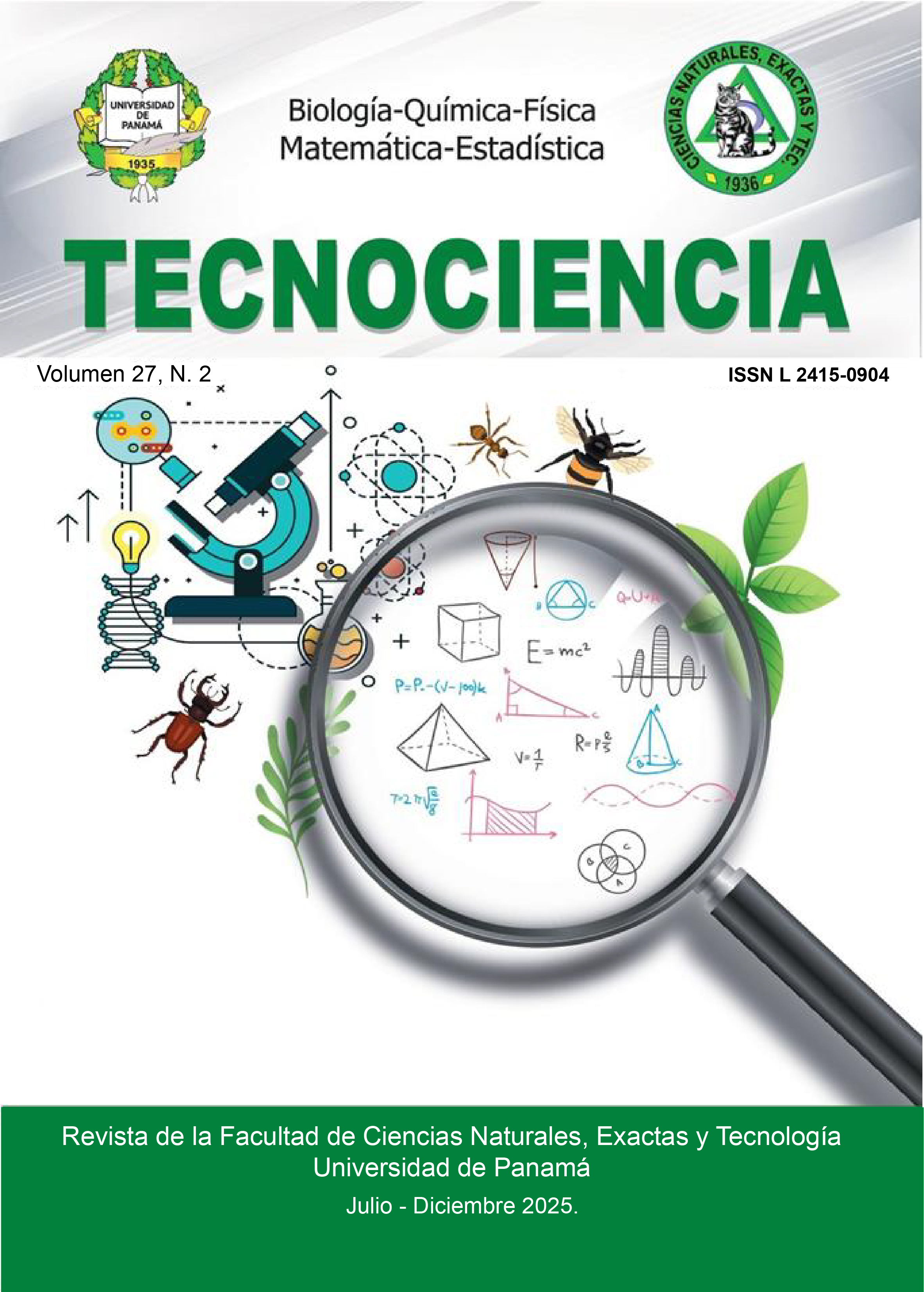
Artículos
Vol. 27 No. 2 (2025): Tecnociencia

Copyright (c) 2025 Tecnociencia

This work is licensed under a Creative Commons Attribution-NonCommercial-ShareAlike 4.0 International License.
To evaluate the nesting activity of the green turtle (Chelonia mydas) over a three-year period at Playa Lagarto, nighttime monitoring was conducted from May 2021 to April 2024. The beach was divided into nine segments to determine whether the turtles preferentially use specific areas for nesting. For each turtle, data on date, nesting time, nesting activity number, biometric measurements, tracks, track types, nest count, and nesting segment were recorded. A total of 535 nesting events were documented, categorized as false nesting (41.12%), false crawls (26.36%), successful nests (21.87%), and unknown cases (10.65%). Chelonia mydas was found to nest most frequently between December and April, predominantly between 21:00 and 23:00 hours. Biometric data were recorded for 193 nesting females, with an average curved carapace length of 92.4 ± 7.12 cm and an average curved carapace width of 86.1 ± 6.35 cm. Among the 110 observed nests, 87.27% were successful, while 12.73% were poached. This study aids in optimizing conservation efforts by informing the design of effective strategies to protect essential habitats and ensure the long-term survival of green turtles.
Este obra está bajo una licencia de Creative Commons Reconocimiento-NoComercial-CompartirIgual 4.0 Internacional.
